It is a generally accepted fact among the cricket lovers that the current era of the game is not blessed with the kind of bowling talent that the previous generations had the privilege of watching.
However, there are many bowlers who have plied their trade successfully to stack up impressive stats in recent years. But there are a few also who promised a great deal and excited everyone with their talent in early stages of their careers but have so far failed to live up to the expectations.
Here is a list of five highly-talented bowlers who just couldn't cut it consistently at the highest level:
5. Devendra Bishoo
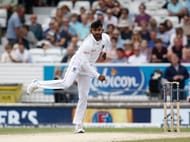
2011 saw the emergence of some of the most talented players on the world stage of such players such as Wahab Riaz and Darren Bravo. But the man who earned the ICC Emerging player of the year award that year was the little Guyanese leg-spinner by the name of Devendra Bishoo. This may have come as a surprise to some but those who followed his performance in the preceding months knew the youngster was going to take the world by a storm.
Bishoo came into the West Indies team during the 2011 World Cup and impressed many with his bowling against teams like India and England. His dismissal of Mahendra Singh Dhoni (out stumped) showed he possessed the rare talent of beating good batsmen in flight.
The encouraging signs became more substantial when he displayed superb control and skills in the home ODI series against Pakistan. Without having a proper googly but exercising impeccable control on line and length, the wrist-spinner made life tough for Pakistani batsmen, so much so that during one of the matches, the veteran Misbah-ul-Haq went up to him and patted him on the back after safely negotiating his final over of the match.
Bishoo's good run continued against Pakistan in the Test series that followed as well as during India's tour of the Caribbean and was sufficient to earn him the ICC award.
However, he couldn't sustain his good form and started to struggle at the top level. He started bowling flatter and quicker and lost the ability to deceive the batsmen in flight that characterised his bowling. West Indies eventually dropped him out of the national team setup. While he is back in the side and has produced some good spells, he is yet to achieve that distinction that he was marked out for.
4. James Pattinson
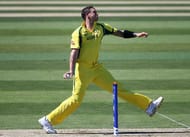
Australia often seem to have an unending supply of talented young fast bowlers but after the humiliating 3-1 defeat to England in the 2010-11 home Ashes, there seemed to be a drought of capable bowlers in the country.
But then arrived on the scene two highly talented young pacers - Mitchell Starc and James Pattinson. The former is one of the finest, if not the finest speedster in international cricket today and Pattinson, stricken by injuries, is looking to find his way back into the team.
However,at the start of their careers, it was right-armer who was hogging all the limelight. Possessing the most crucial ingredient to a seamer's success - genuine pace - along with good height, Pattinson showed great ability and talent to pick up a bucket load of wickets in his first season.
Already dubbed as the future leader of Australia's pace attack, Pattinson continued to impress and even picked up a five-for in the Chennai Test against India in 2013 on a pitch tailor-made for spinners.
But then Australia's fast-bowling stocks began to swell again as Mitchell Johnson and Ryan Harris regained their place as Australia's lead strike bowlers and in later, Starc began to upstage Pattinson.
Injuries prevented Pattinson from keeping his place in the side for a prolonged period and affected his consistency. Off lat, he may well have played in the 4th Test of the recent Ashes series if it wasn't for injury but he has a long distance to cover in order to catch up.
3. Steven Finn
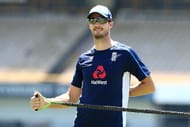
When a fast bowler is over six and a half feet tall and can bowl at over 150 kph, he ought to be a standout. And Steven Finn was just that for the first three years of his international career.
He bowled with an action that didn't seem to put too much load on his body and with his height and pace, he got the ball to bounce awkwardly off a length. Finn also managed to get some swing to supplement other qualities of his bowling.
He was extremely impressive in limited overs cricket during England's rise to the top spot of ODI rankings during the 2011-13 period and was pivotal to the team's achievement.
Finn's performance in Test arena wasn't as impressive, though he played a key role in England's victory over India in the Kolkata Test of 2012, which eventually resulted in England's win in he series.
But England, during that period, were obssessed with 'bowling dry' and during interviews, he repeatedly talked about trying to improve his economy rate. The apparent attempt to make him an economical bowler instead of using him as an out-and-out attacking option was surely confounding.
He also had a peculiar habit of hitting the stumps at the non-striker's end with his right knee in his run up, something that was a non-issue until Graeme Smith made an issue of during South Africa's England tour in 2012. This eventually led to ICC bringing in a new rule which mandated the umpire to call no-ball whenever the bowler knocked the bails off the stumps at the bowler's end in his run up. This further complicated matters as Finn had to remodel his run up.
The cumulative effect of all this was Finn losing his confidence and becoming a pale shadow of the bowler he originally was as he lost his place in the side. Considering his apparent lack of self-confidence, questions were asked as to whether he was being managed correctly by the then captain Alistair Cook and coach Andy Flower, who dubbed him 'unselectable' during the miserable Ashes series down under in 2013-14.
Finn did find his way back into the team and produced good results in 2015 Ashes at home and did well subsequently in South Africa as well. But he now lacks the venom his bowling had in the early years and is currently struggling to get back into the Test side.
4. Doug Bracewell
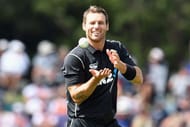
When one thinks of New Zealand's swing bowlers, the names of Tim Southee and Trent Boult spring to mind. These two have combined since 2012 to become one of the most proficient swing bowling duos in international cricket. But before Boult and Southee emerged as the lead strike bowlers for New Zealand, it was another young pacer from Black caps stable of fast bowlers who caught everyone's attention.
Doug Bracewell produced one of the most memorable bowling performances for New Zealand when he bowled them to a historic Test win over Australia at Hobart in late 2011. Hobart had become the most swing friendly venue in Australia and the pitch for this particular match was lush green, making it ideal for swing bowling. And Bracewell made good use of it, troubling the Australian lineup with his movement in the air.
His figures of 6/40 wrecked the Australian batting line up, which was looking quite fragile, in the second innings and gave gave the Kiwis their first victory in Australia in ages.
Bracewell seemed like a perfect article for swing bowling and was expected to become a mainstay of the New Zeland Test team. But he couldn't follow up his performance in Hobart with consistent results and was eventually overtaken by Boult and Southee as the swing kings for their team.
5. R Vinay Kumar
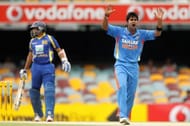
In Indian cricket, there seems to be a unique relation between the name Kumar and the ability to swing the ball. Apart from Praveen Kumar and Bhuvneshwar Kumar, Vinay Kumar was another bowler blessed with ability to move the ball either way, a trait that got him into the national team.
The medium-fast bowler was known to be skiddy bowler who rushed the batsmen with a little more pace than expected .
Kumar has been plying his trade successfully for Karnataka in domestic cricket. Even in international cricket in the limited-overs formats, he proved to be a very useful bowler as he added a bag full of tricks to his arsenal like slower deliveries and cutters.
But he couldn't produce that breakout performance that could have established him as a key member of the Indian team. He got an opportunity to play at the Test level when he was picked as the fourth seamer for the Perth Test in 2012 but proved completely ineffective.
While Bhuvneshwar Kumar gets more swing and has been able to increase his pace to earn a regular spot in the Indian side, Vinay Kumar's inability to do the same has left him in a lurch and put him a long way back in the pecking order of Indian seam bowlers. Currently, he is far from being anywhere close to the national team and has been overshadowed by bowlers with more pace or more guile.
Looking for fast live cricket scores? Download CricRocket and get fast score updates, top-notch commentary in-depth match stats & much more! 🚀☄️
